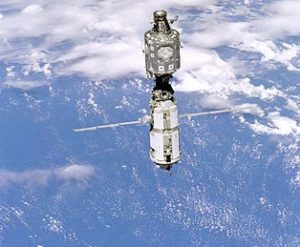
A new study carried out by researchers from the University of Michigan suggests that longer stay in space may cause changes in the shape of an astronaut’s brain.
Researchers used magnetic resonance imaging (MRIs) technique to analyze the shape of the brains of 12 astronauts’ who had spent two weeks in space on Space Shuttle and 14 astronauts who spent six months on ISS. These astronauts had spent time in space between 2008 and 2012. Brains of astronauts were examined before and after space missions. They found that during spaceflight, astronauts’ brains compress and expand, thus increasing and decreasing the volume of grey matter in different regions of the brain. Gray matter in brain is responsible for functions like muscle control and memory and sensory perception.
“We found large regions of gray matter volume decreases, which could be related to redistribution of cerebrospinal fluid in space,” said Dr. Rachael Seidler, a professor of kinesiology and psychology at the university.
“Gravity is not available to pull fluids down in the body, resulting in so-called puffy face in space. This may result in a shift of brain position or compression.”
Changes in brain structure were found to be much greater for ISS astronauts than those who had spent time on Space Shuttle.
“Some of the areas show decreases in grey matter volume, and I don’t want anyone to think that means you go to space and lose brain cells,” Seidler told Gizmodo.
“The losses are coming from shifts in fluid in the brain that happen with flight.”
Specifically, changes in the volume of grey matter appear due microgravity. On ISS, very little gravity is maintained.
“Imagine gravity pulling all the fluids toward your feet, and in space you don’t have that happening.” Seidler said.
“There’s more fluid toward the head—you may have seen photos of astronauts where they have puffy faces in space—but there’s a shift in fluid in the brain as well.”
These results are largely similar to the results of a long-term bed rest study – led by Seidler – in which brains of the volunteers shifted up as they spent up to three months in downward tilted position.
The detailed findings of the new study – believed to be the first to analyze structural changes in astronauts’ brains during spaceflight – have been published in in Nature Microgravity.
http://www.ns.umich.edu/new/releases/24506-astronauts-brains-change-shape-during-spaceflight
